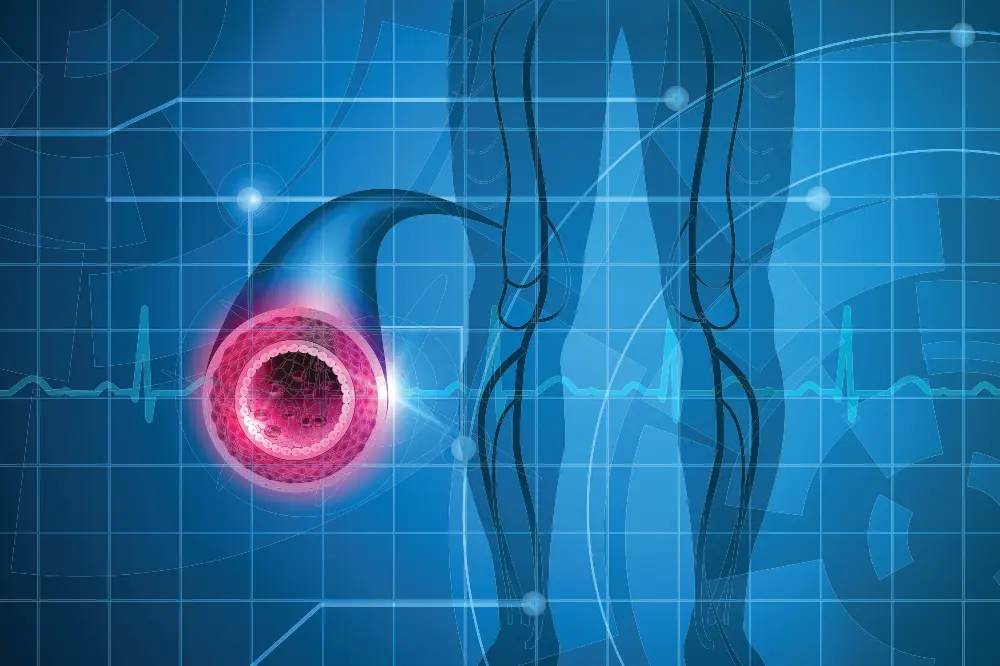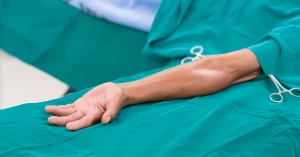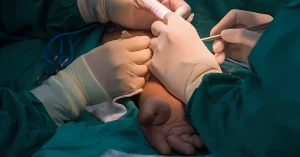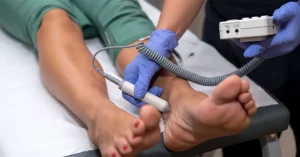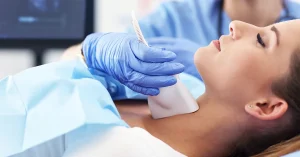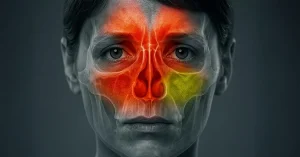What Are the Symptoms of Peripheral Arterial Disease?
- Cramping in the legs, especially the calves and thighs, during walking or physical activity
- Pain that disappears when you rest
- Numbness or tingling in the legs and feet
- Sharp, shooting pain in the feet, especially while resting
- A constant feeling of muscle fatigue or “muscle fever” in the leg
- Cold feet or one foot colder than the other
- Loss of leg hair
- Changes in skin color on the foot or toes
- Pain that wakes you up at night
Recommended article: The Venosteam steam method has remarkable advantages over other thermal methods of varicose vein treatment
Important Note: Many older adults assume these symptoms are simply signs of aging. However, they are often linked to PAD. It’s essential to speak with your doctor. An arterial Doppler examination is critical to detect the problem early, begin proper treatment, and prevent serious complications.
Who’s Affected?
PAD affects approximately 10% of the population, which varies by country, diet and lifestyle. It can affect anyone but is more common in individuals over age 50.
Risk Factors in Peripheral Arterial Disease
The people most at risk include:
- Adults over 50
- Smokers
- Diabetics
- Individuals with a sedentary lifestyle
- Overweight individuals
- Patients with high blood pressure or high cholesterol
- Anyone with a family history of peripheral arterial disease
How Peripheral Arterial Disease Is Diagnosed
To diagnose PAD, your doctor may recommend the following:
- Echo-Doppler: Measures blood flow and identifies any blockages
- Ankle-Brachial Index: Compares blood pressure in the ankle to the arm; lower ankle pressure suggests narrowed or blocked arteries
- CT Angiography or MRI Angiography: Visualizes the arteries
- Magnetic Resonance Imaging (MRI): Provides detailed views of arterial narrowing, blockages, aneurysms, and calcifications
How to Prevent Peripheral Arterial Disease
If you notice any symptoms of peripheral arterial disease, talk to your doctor right away. Early diagnosis can help reduce symptoms and improve the success of treatment. Lifestyle changes, early medication, and vascular monitoring play a key role in prevention.
Peripheral Arterial Disease Complications
If left untreated, PAD can lead to serious and life-threatening complications. Reduced blood flow not only affects the legs but may also indicate broader vascular issues, including heart disease and stroke. Timely diagnosis and treatment are essential.
Angioplasty and Stenting
Angioplasty and stenting are performed using advanced imaging guidance. The doctor gently inserts a thin catheter through the femoral artery in the groin and guides it to the area where the artery is narrowed or blocked. Once in place, a small balloon is inflated to reopen the artery and restore healthy blood flow. In some cases, a stent—a small mesh cylinder made of metal wires—is inserted to keep the artery open. This procedure is minimally invasive and does not involve traditional surgery. It only requires a small puncture about the size of a pencil tip.
Balloon angioplasty and stenting have largely replaced open surgery as the preferred treatment for Peripheral Arterial Disease (PAD). Large, randomized clinical trials around the world have shown that for many types of arterial blockages, this approach is just as effective as surgery. Recovery is much faster—most patients are able to leave the clinic within 24 hours or less. Because of its proven safety, effectiveness, and quick recovery time, angioplasty and stenting is now considered the first-line treatment for peripheral arterial disease.
Atherectomy
Atherectomy is a minimally invasive treatment used to remove plaque buildup inside the arteries. During this procedure, the doctor inserts a small catheter into the affected artery. At the site of the blockage, the catheter is equipped with a special tool that either shaves or cuts away the plaque. This allows the artery to be cleared and blood flow to be restored without the need for open surgery.
Stent-Graft
A stent-graft is a special type of stent made from metal mesh and covered with a synthetic material. It is shaped like a tube and is used to reinforce a weakened or damaged artery, typically in the case of an aneurysm. Blood pressure and other stressors can cause the wall of the artery to bulge like a balloon, increasing the risk of rupture over time.
The stent-graft acts as a support structure, sealing and stabilizing the weakened artery wall. It spans the length of the aneurysm—from just below it to just above—allowing blood to flow smoothly through the graft without putting pressure on the damaged section of the artery. This treatment is commonly used for abdominal aortic aneurysms (AAA), thoracic aortic aneurysms (TAA), and occasionally for other types of aneurysms.
Aneurysms most often develop in the aorta, the largest artery in the body. Normally, the aorta measures around 2 centimeters in diameter. Aneurysms are diagnosed when the artery’s diameter increases by at least 1.5 times its normal size. A ruptured aortic aneurysm is a life-threatening emergency, as it causes severe internal bleeding and can be fatal if not treated immediately by a specialized medical team.
The formation of aneurysms is often linked to hardening of the arteries—a sign of advanced vascular disease, which also includes conditions like heart attack and stroke. When detected early, these issues can often be managed with lifestyle changes. Quitting smoking and committing to a regular exercise routine can help relieve symptoms and slow disease progression.
Endovascular stent-grafts are designed specifically to prevent aneurysms from rupturing. The term “endovascular” means that the procedure is performed from within the blood vessel. Using specially designed instruments, the vascular surgeon makes a small incision in the artery and inserts a thin tube (catheter) that carries the stent-graft to the aneurysm site. Once in position, the stent-graft is deployed to stabilize, realign, and reinforce the artery from within.
Patients usually recover faster from endovascular treatment than from traditional surgery. Hospital stays are shorter, and the risk of complications is lower due to the minimally invasive nature of the procedure. However, in certain cases—such as when the shape or location of the aneurysm is not suitable for stent placement—traditional open surgery may still be the safer and more effective option.
How to Prepare for Stent-Graft Treatment
Your doctor will begin by reviewing your medical history and performing a thorough physical examination. In addition, you may be asked to undergo several diagnostic tests. These can include an electrocardiogram (ECG), an exercise stress test, and an Angio Scan (MRI or CT). These imaging studies help determine the size, shape, and location of the aneurysm, which are essential in deciding whether endovascular stent-grafting is a suitable treatment option.
If the evaluation confirms that stent-graft treatment is appropriate, your doctor may recommend additional, more detailed investigations:
- Spiral CT scan: This test uses a series of rapid X-rays taken in a spiral pattern around your body. A computer then reconstructs a three-dimensional image of your blood vessels for precise assessment.
- Angiography: In this procedure, a thin catheter is inserted into an artery. A contrast dye is then injected through the catheter, and X-ray images are taken to provide detailed pictures of the blood vessels.
These tests help your doctor plan the safest and most effective treatment tailored to your condition.
Am I Eligible for Endovascular Stent-Graft?
You may be eligible for endovascular stent-grafting if the aortic aneurysm is large enough—typically more than 5 centimeters in diameter—and there are healthy sections of artery both above and below the aneurysm where the stent-graft can be securely placed. This minimally invasive option is especially beneficial for patients at higher risk of complications from conventional surgery due to other existing health conditions.
However, if you have a long life expectancy, a low surgical risk, or if the shape or location of the aneurysm is not favorable for endovascular repair, traditional open surgery may be recommended. At VenArt Clinic, general surgery is a key specialty. Our surgical procedures are performed by experienced physicians who have trained and practiced in prestigious clinics across Europe, the United States, and Israel.
The physical characteristics of your aneurysm will help your vascular surgeon determine whether endovascular treatment is right for you. In abdominal aortic aneurysms (AAA), eligibility depends on favorable positioning and a relatively straight aortic anatomy. The arteries also need to be wide enough to allow the stent-graft to pass safely and reach the targeted area, and the device must be able to conform to the shape of your aorta.
Endovascular stent-grafting is not limited to the aorta; it can also be used to treat aneurysms in other arteries throughout the body. Your vascular surgeon will carefully assess your condition and let you know if this technique is a suitable option for your treatment.

